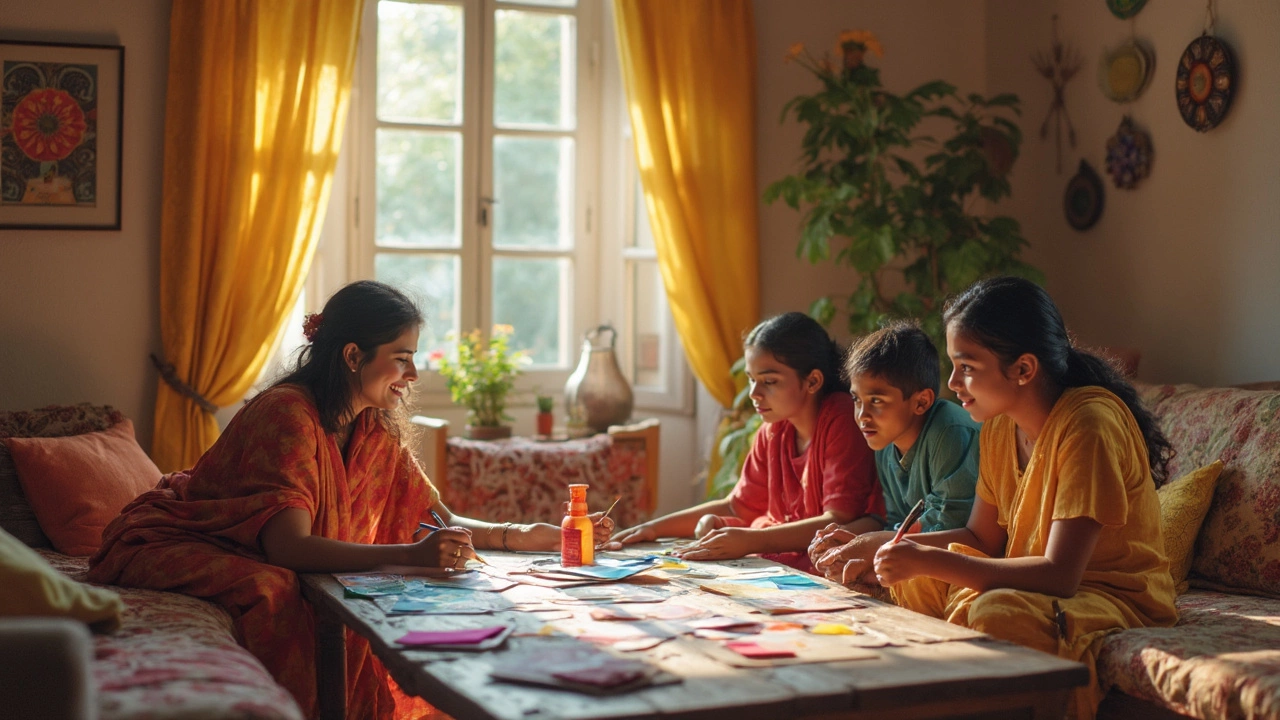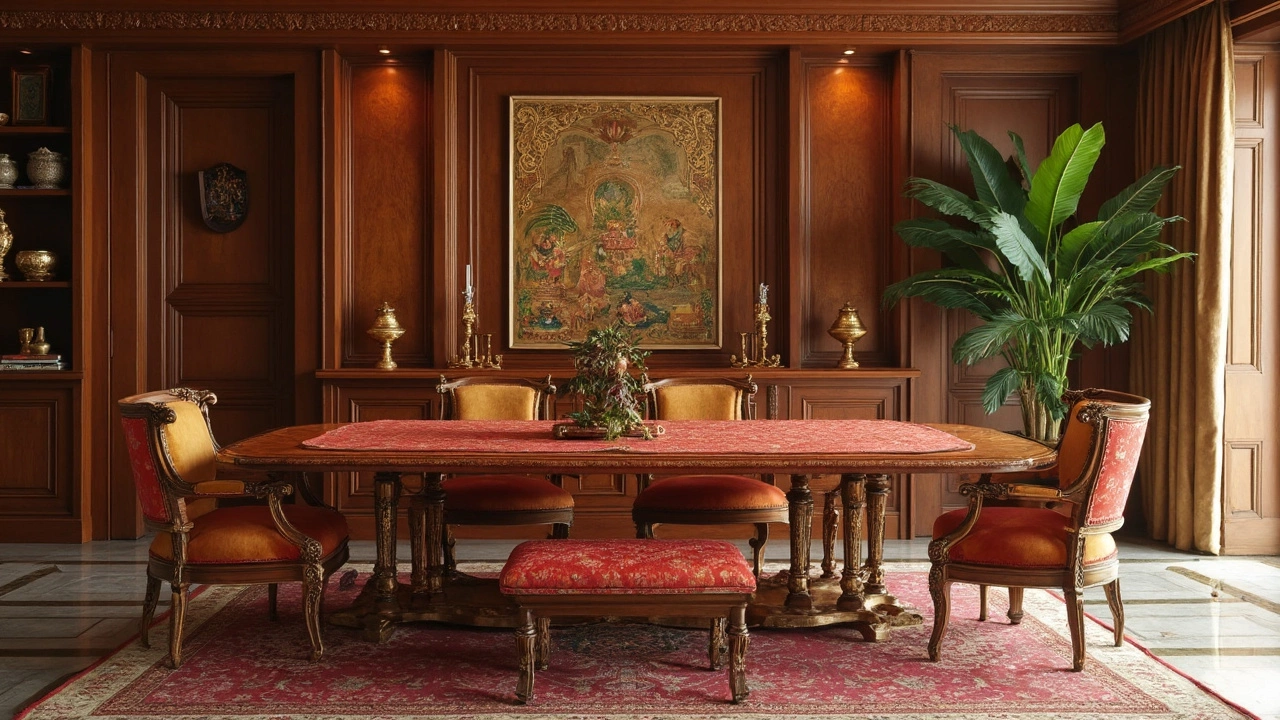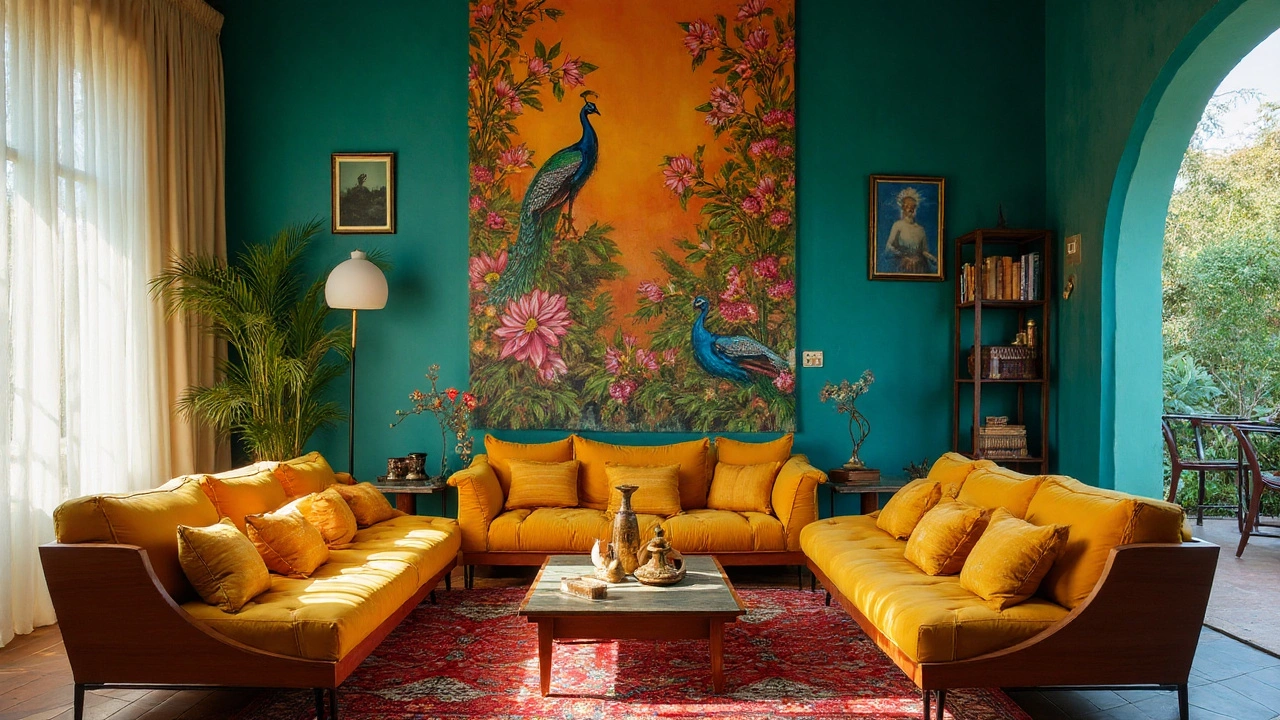Transform Your Plain Room with Stunning Wall Art Ideas
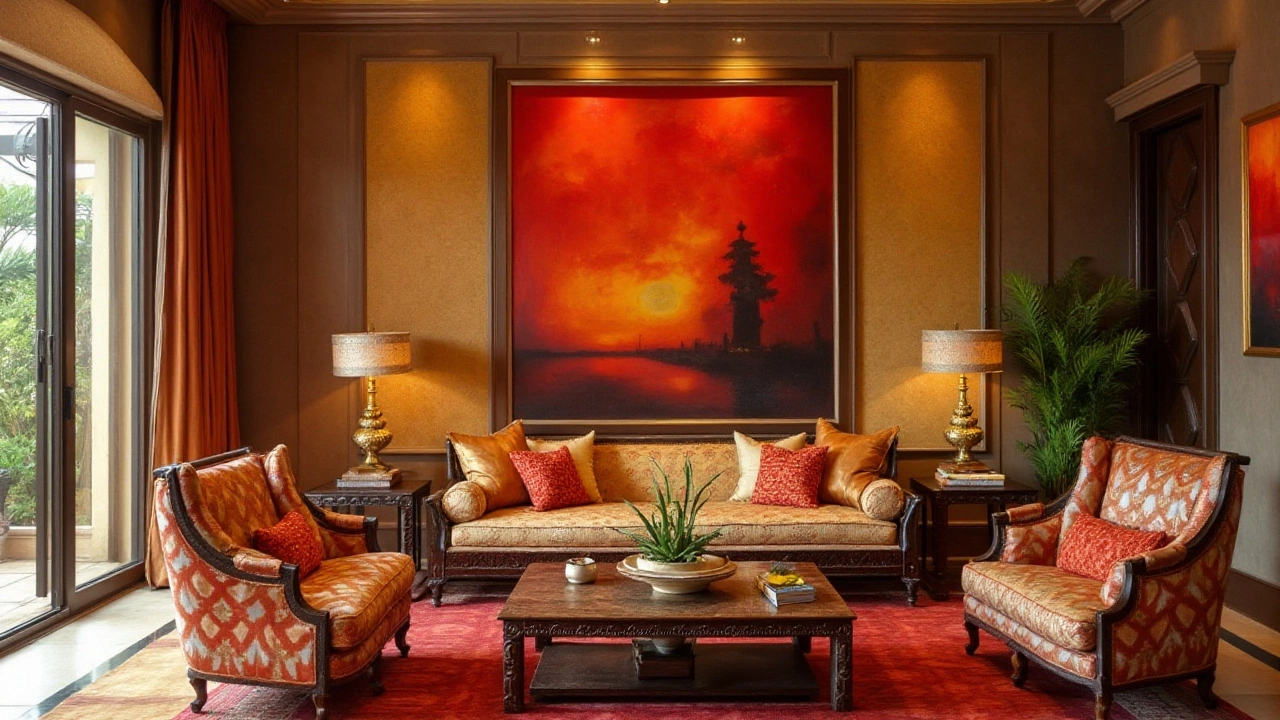
Staring at blank walls can make a room feel empty and uninspiring, but with the right wall art, you can change the entire vibe of a space. The beauty of wall art is its versatility – it offers endless possibilities to express your personal style, enliven your interiors, and create a focal point that conveys the story of your home.
Whether it's a striking painting, an intricate tapestry, or a collection of family photos, wall art has the power to transform your room. The key is finding pieces that not only resonate with you but also fit seamlessly into the existing decor. In this article, we'll delve into selecting and arranging wall art so your space feels curated and cohesive. Get ready to turn those plain walls into a showcase of creativity that not only speaks to your heart but also draws the admiration of every guest.
Understanding Your Style
Embracing your personal style is the first step in turning your plain room into a space that feels truly yours. The essence of any great interior design lies in its reflection of the inhabitant's personality and preferences. Are you drawn to bold, modern aesthetics with clean lines and vibrant colors? Or perhaps the calm, muted tones of Scandinavian design resonate with your affinity for minimalism? Recognizing your style involves a journey through what speaks to you not only visually but emotionally. Pay attention to the colors and patterns that catch your eye in everyday life. Observe which environments make you feel most at ease or invigorated. Expressing these preferences through wall art can help cultivate an immediate sense of connection with your space.
Diving deeper into your style requires a little introspection and exploration. Start by considering your existing decor: what do the shapes, colors, and textures of your furniture and accessories say about your aesthetic? If your room is filled with rustic, wooden elements and earthy colors, traditional or landscape paintings may augment that warm, natural feel. Meanwhile, a love for eclectic and vintage pieces might see you leaning towards abstract art or retro prints. The interplay of various art forms can be like crafting a home symphony, each piece contributing its unique notes. Remember, there’s harmony to be found between contrast and blend; using one to emphasize the other can create a captivating balance within your decor.
“Art enables us to find ourselves and lose ourselves at the same time.” – Thomas Merton
A deep dive into your preferences should incorporate influences that extend beyond the space itself. Sometimes, cultural heritage and past experiences provide rich veins of inspiration. Art that holds historical or personal significance can transform any wall into a narrative canvas. Have you ever visited a place that left a profound impact on you? Incorporating pieces that evoke memories of these places can further enhance the authenticity of your style. On a practical note, start gathering inspiration like mood boards or digital scrapbooks from platforms like Pinterest or design blogs. This visual compilation can serve as your guiding light when you’re sifting through numerous art options in the plethora of interior markets or online stores.
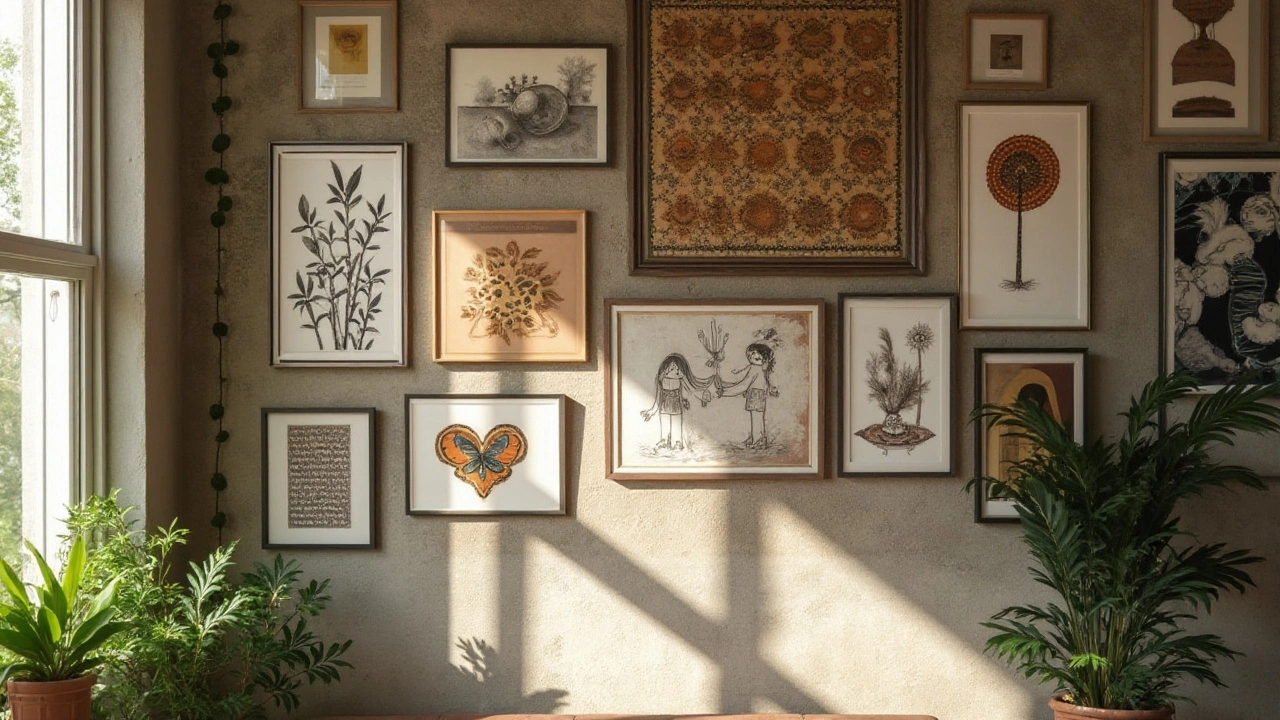
Choosing the Right Art
Selecting the perfect wall art for your room involves more than just picking something that catches your eye. It's about considering various elements that align with your personal taste, the room's color scheme, and the overall vibe you wish to create. To begin with, understanding the different types of art—paintings, prints, photos, and sculptures—can help streamline choices. Painted art can bring in sophistication and depth, while prints could offer modern and affordable options. Large-scale photographs, on the other hand, can give a space a striking focus, drawing attention and sparking conversations.
Diving into the specifics, color plays a huge role in how a piece of art can transform a space. Rooms with neutral tones might benefit from a splash of vibrant colors in the art, creating an interesting contrast. Those who love color can select artwork that either complements or contrasts with the existing palette, ensuring that the piece becomes a harmonious part of the decor. A significant point to ponder is lighting. Natural daylight enhances the brightness and detail of art, whereas soft evening lighting might best suit pieces with darker tones or metallic elements.
"Art is not what you see, but what you make others see," said Edgar Degas. This notion highlights the importance of context and personal resonance in art selection. Choosing art that resonates with your personal experiences or something that makes guests see your space differently can turn a plain room into a narrative.Consider the room's purpose. For living rooms, where conversation flows, opt for art that could inspire dialogue. In a bedroom, pieces that lend relaxation or comfort through soothing colors or serene themes are ideal. For those who find joy in mixing mediums, integrating different types of wall art can add texture and depth to the decor. Try combining shelves with small sculptures and prints or mixing fabric wall hangings with traditional paintings to create a layered, dynamic look.
Budget is another factor to consider, as stunning pieces are available for every price range. Emerging artists often offer unique and compelling work at reasonable prices. Exploring local art fairs or online platforms can lead to hidden gems. Investing in art doesn't always equate to significant spending; sometimes, the story behind an art piece can offer priceless value. Whether you favor bold statement pieces or gentle nuances, ensuring that your choice reflects your personality and enriches the living space is vital.
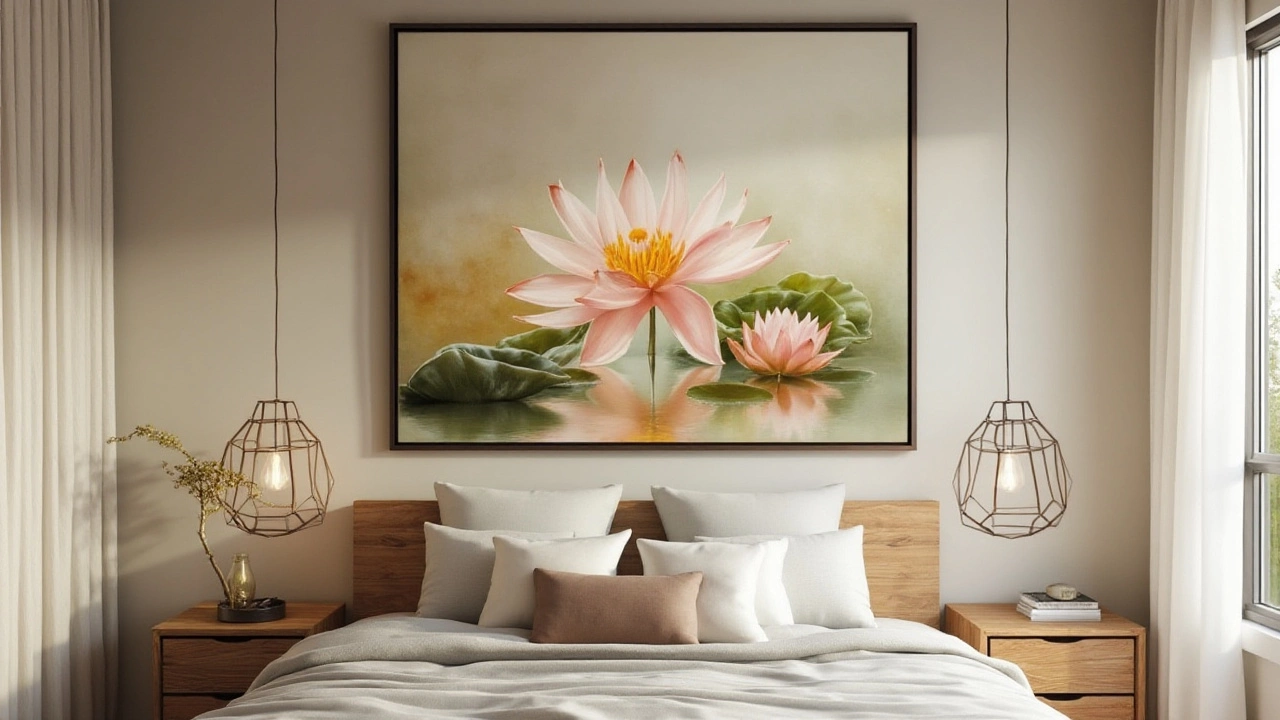
Arranging Art Creatively
Arranging wall art is both an art and a science, inviting a balance that complements your room's design while making a bold statement. The first step in a successful arrangement is to consider the scale of your space. Large artworks can anchor a room and should be the centerpiece of any collection, while smaller pieces invite viewers to come closer. The placement of these items should draw the eye in a deliberate path, guiding viewers from one piece to the next. Creating a gallery wall is an effective way to showcase smaller pictures, mixing and matching them with larger canvases to create depth and interest.
The beauty of art lies not only in the work itself but in how it's displayed. A compelling arrangement should take into account the room’s architectural features. Is there a fireplace, sofa, or bed that can serve as a visual anchor? Use these elements as starting points for your layout. The bottom edge of artworks should typically be at eye-level, but don't be afraid to break this rule for dramatic effect. Remember, purely symmetric arrangements can feel stiff; staggered art groups or salon-style hangings can add vibrancy and movement to a wall.
Experimentation is key when arranging art. Temporary mounts, like washi tape, allow you to play with different layouts without committing to nails and hooks. Lay artwork on the floor until the design sings to you, then step back and assess. Consider how lighting plays a role; use it strategically to spotlight your favorite pieces or provide even illumination across a gallery wall. "Art can be transformative," says the renowned interior designer Nate Berkus, "It should make you feel something every time you walk in a room."
Don't overlook the opportunity to incorporate three-dimensional pieces alongside traditional paintings or prints. Sculptural elements, wall-mounted objects, or even textiles bring texture and an unexpected layer to your arrangement. A mix of mediums not only creates visual intrigue but ensures your space remains engaging from every angle. For those willing to think outside the box, consider DIY wall art projects that allow personal touches and creative expression, aligning perfectly with your desired aesthetic.
For those who aim to create a timeless but dynamic display, incorporating art with different styles, like modern abstracts and antique portraits, can yield a sophisticated contrast. The diversity in art styles can tell a multi-faceted story of your preferences and personality. A study found that people who incorporate varied styles in their decor reported greater satisfaction with their interiors, indicating that a diverse approach not only enhances aesthetics but enriches personal attachment to the space.
| Style | Description |
|---|---|
| Modern Abstract | Features bold colors and shapes, often without clear imagery, to provoke thought and emotion. |
| Antique Portrait | Depicts historical figures or classic poses, offering a glimpse into the past and often rich with detail. |
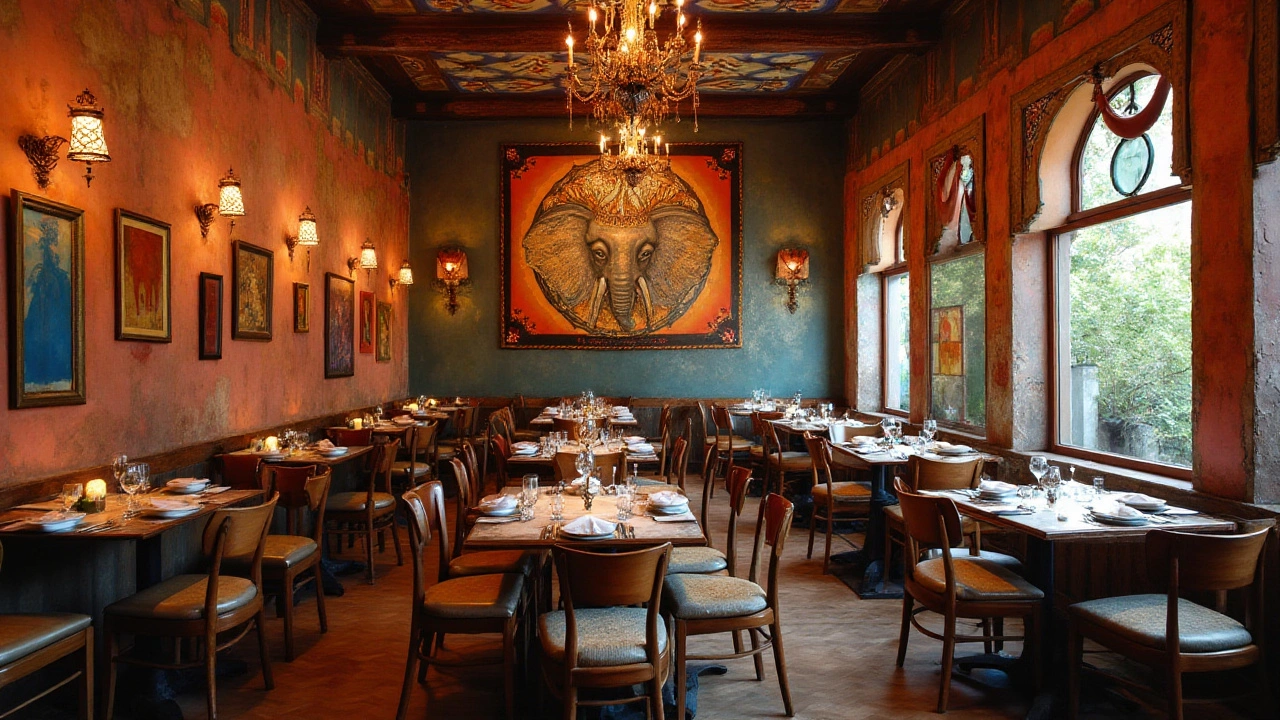
DIY Wall Art Projects
Diving into DIY Wall Art Projects offers a chance to create personalized and unique decor pieces that can rejuvenate any space. Rather than simply buying mass-produced prints, engaging in DIY projects allows you to explore your creativity and craft something that truly reflects your style and personality. You might find that the process of creating your own art can be just as fulfilling as the final product itself. Whether you’re an experienced crafter or a beginner looking to dabble, there's a project out there for everyone which can add character and warmth to your home. Consider that even simple materials can evolve into stunning pieces of art, making the DIY journey both eco-friendly and cost-effective.
One popular project is creating a patterned canvas using household items. Start with a blank canvas, some paint, and everyday items like old credit cards or sponges. Dip these objects into the paint and press them onto the canvas to create unique patterns and textures. The beauty of this method lies in its simplicity and the ability to produce a modern art print that feels both abstract and intentional. Try experimenting with colors that complement your room's palette for a cohesive feel. As Pablo Picasso once said,
"Every child is an artist. The problem is how to remain an artist once we grow up."This sentiment perfectly captures the spirit of DIY art, emphasizing playfulness and experimentation.
An innovative and interactive DIY project is the creation of a photo mural. This project involves gathering your favorite photographs—whether they're family portraits, travel shots, or abstract photos—and arranging them in an eye-catching grid or cluster layout on your wall. Use double-sided tape or adhesive strips that won't damage your wall to fix the photos in place. It's not only visually appealing but also offers a snapshot of your life's precious memories. Assembling a photo wall allows you to change photos regularly, providing a dynamic and ever-evolving artwork display.
If you're interested in textures, consider making DIY fabric art. This involves stretching an aesthetically pleasing fabric over a canvas or frame, securing it around the edges. You can choose fabrics with various prints, from geometric patterns to floral designs, allowing the fabric art to add depth and dimension to your room. This method is striking yet straightforward, offering warmth and textile beauty. If you're handy with sewing, you might even craft quilted art pieces that introduce intricate textures to your space.
To add a touch of nature, create a wall hanging made from materials like driftwood, feathers, and strings. These natural elements can bring a sense of the outdoors into your living room and create a rustic yet elegant ambiance. Try using rope or thread to tie these items and hang them from a central piece of branch or driftwood. Such projects contribute to a boho-chic aesthetic and emphasize sustainable decorating, highlighting the growing trend of eco-friendly home decor.
